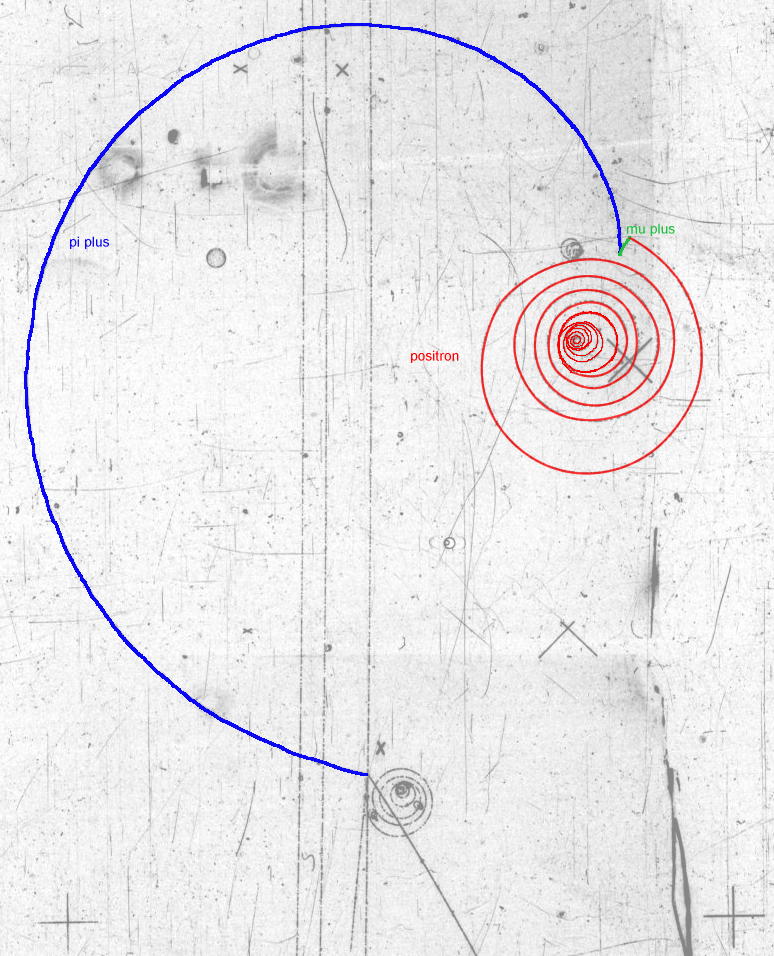


This event was produced in the CERN 2 metre hydrogen bubble chamber, exposed to a 10 GeV/c K+ beam (from top of the picture).
It provides a classic example of a pion stopping and then decaying into a muon. This a `two-body decay' - the muon is accompanied by a neutrino moving in the opposite direction with equal and opposite momentum. Energy and momentum conservation force this momentum to be about 30 MeV/c. The range of a muon with this momentum in hydrogen is about a centimetre.
At the end of its short range, the muon itself decays into an electron which spirals characteristically.
Details of the neutrinos involved in these decays.
The picture also shows examples of low momentum electrons (little spirals) knocked out of atoms by passing high energy tracks. These are referred to as `delta rays'.
Finally, the short dark track leaving the event is a slow-moving proton (slow compared with the speed of light!) which deposits more energy than the other highly relativistic particles - making more bubble/cm. The distance it takes to stop (range) gives a measure of the energy it had when it left the collision.
More details on energy deposion (dE/dx).